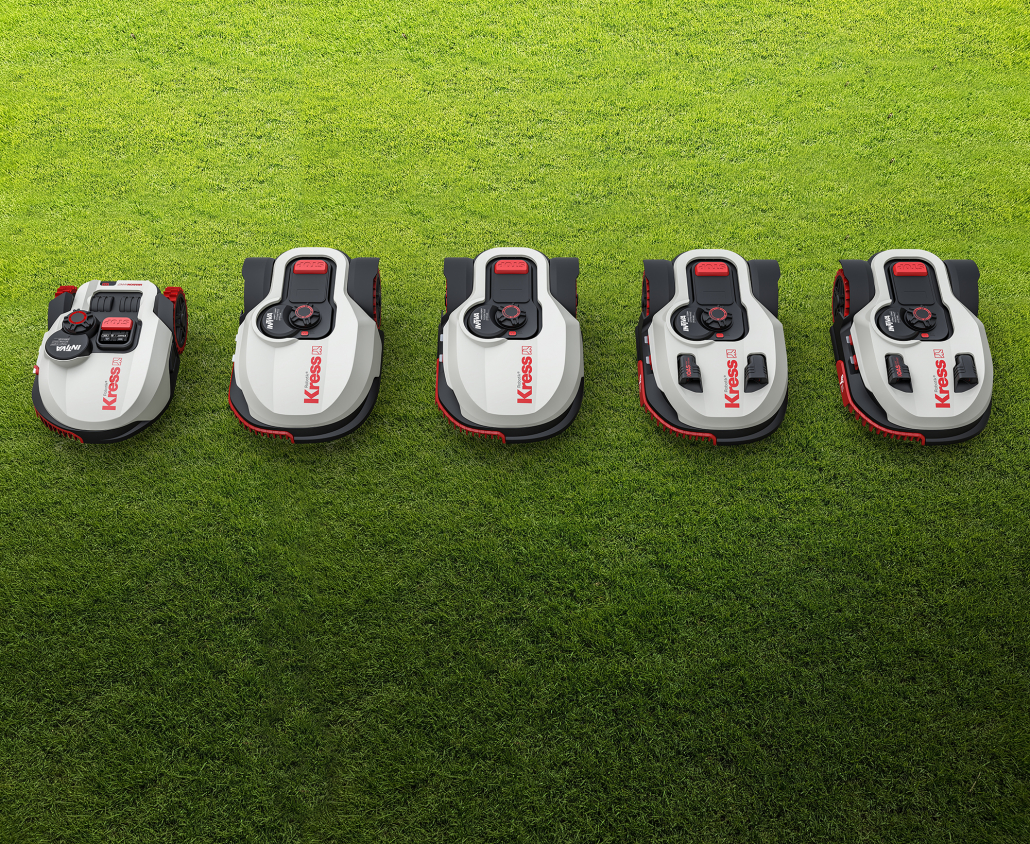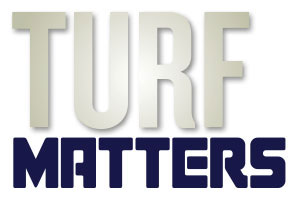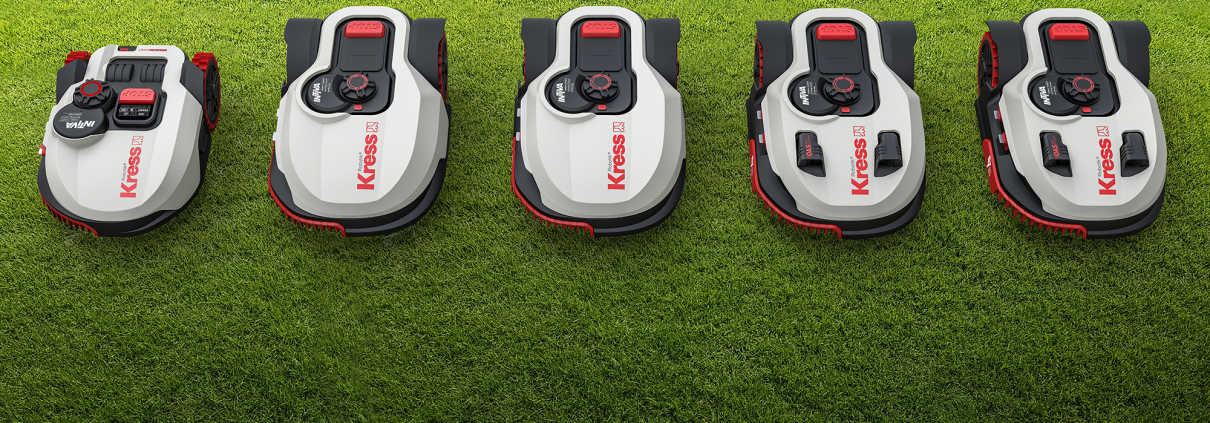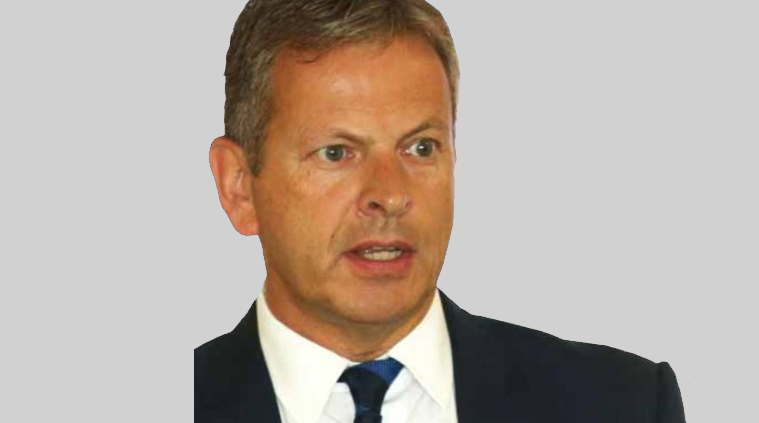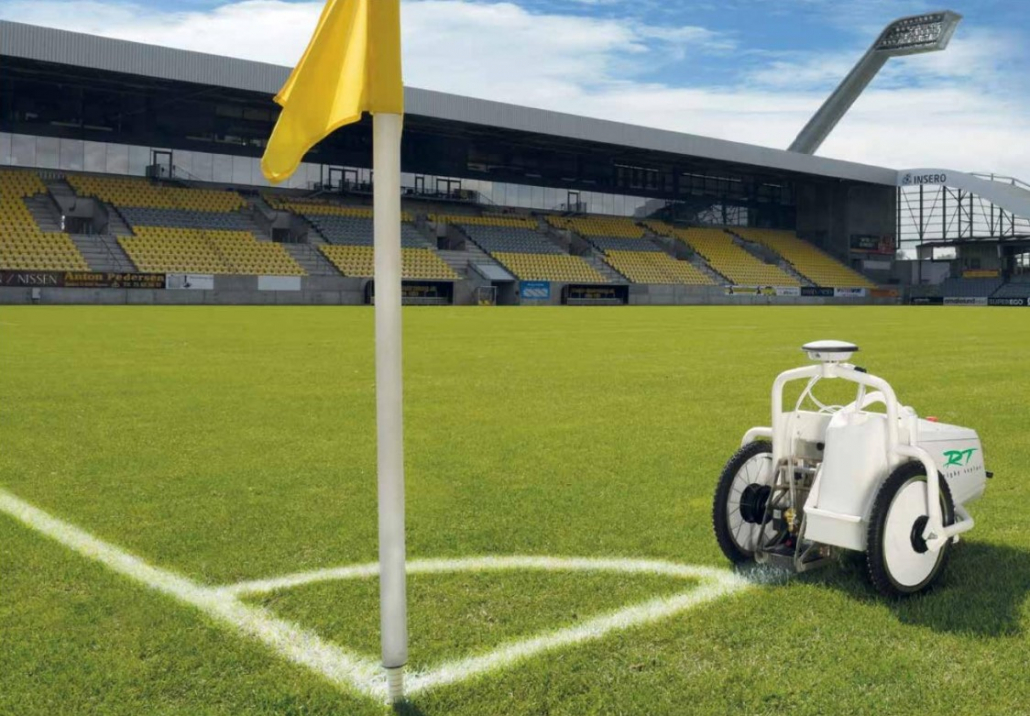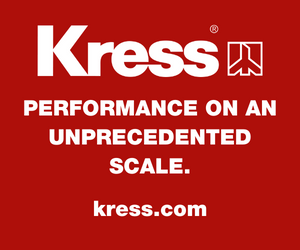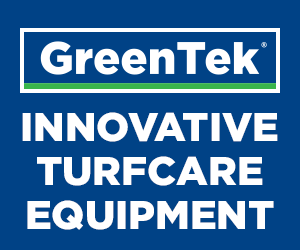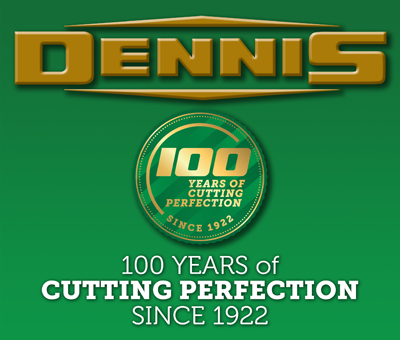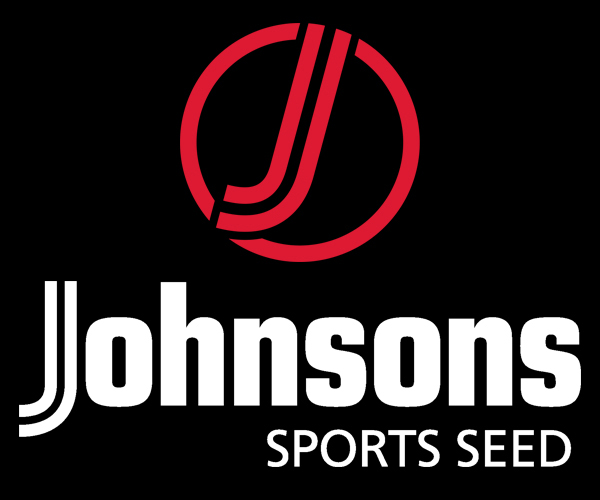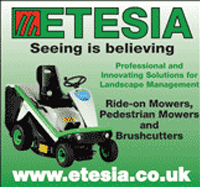Under the cloud of COVID-19: The last three months have been traumatic and many of us will have lost relatives, loved ones, friends and colleagues to the awful Covid 19. We are far from out of the woods, and may even have to endure a second wave, but there does seem to be some light at the end of the tunnel.
What has been super to see during it all has been the manner in which our industry sector has adapted. Over the last six weeks Turf Matters has conducted a series of Zoom interviews with people across all facets on the industry and what has come across has been the professionalism and desire to ensure the best outcomes for staff and whatever their day job entails.

Under the cloud of COVID-19
To document this, and not just leave those Zoom interviews for those with access to our digital platforms, we’ve decided to take some edited highlights for the magazine.
James Pope, Grounds Manager, St Paul’s School, London (Just appointed Grounds Manager Charterhouse School)
Central London, where we are based, is the epicentre of the virus. It is surreal.
As we speak, we should be right in the middle of the cricket term. We’d 1,400 boys here in full flow. It’s a busy site. 45 acres of sports turf, but the boys aren’t here, the teachers aren’t here. The school is on a skeleton staff.
It has given us the chance to get on with our work without time frames and limits, which is nice. But for what purpose, or what end goal?
We have a staff of seven for the grounds and gardens and we are continuing to carry out essential work with three on one day and four the next and alternating. Obviously, we are not sure when the boys are due back or what sport they are going to be playing when they do get back.
It is difficult for us as our winter sports pitches overlap our summer pitches. We can’t start preparing for football and keep cricket operational.
So, we are a little in limbo. We are just keeping up the essential maintenance, cutting, and using a lot of Primo Maxx just to slow the growth down.
We have put ourselves forward to do a lot of the clear-up work after the completion of a big building project at the school.
Lawn reinstatement and everything associated with it, plus a new artificial pathway outside one of the pavilions, will save the school some costs and keep us busy.
Everyone is on a rota. If anyone was to contract Covid the chances are that we’d all get it as we work in close proximity – tea breaks are shared and there is added pressure to make sure we are sanitising everything and not working too closely together.
It is a different scenario for us and really management of turf has to be put on the back burner in favour of people’s health and well-being. Staff welfare is number one priority.
If schools do come back before the end of the academic year, I can’t see us competing with other schools visiting schools in the local area. I think that view is echoed by senior management here.
The risk is not worth taking.
Graeme Beatt, Course Manager, Royal Portrush GC
On our side of things we are managing OK. There are seven of us at the moment, plus a part-timer. Members and visitors are completely gone for this year.
We were fully booked or the year and the members were looking forward to the season too. It is only golf and there are a lot more serious things going on at the moment, but the golf course and a game of golf is something people look forward to all week and that has been taken away.
We are managing to keep the course tidy and have replaced a lot of pedestrian mowing with ride-ons and replaced lightweight fairway mowers.
Previously it was five people out mowing one course. That’s a one man job now with a larger, heavier machine.
We have lost a little bit of quality, but we will get that back before the golfers return. At this time of year we’d be doing a lot of overseeding and top dressing but that eats up staff – five or six people – so all that has just gone by the wayside. It will be the autumn before we can do any work like that.
We did get most of our winter projects completed and it is just a case of keeping things ticking over.
We were quite quick to put policies in place with lunch breaks, lots of hand sanitiser; wiping down equipment before they used it; wiping down lunch room after every use etc. Because we have quite a big team we split them up so we had five different lunch rooms, so we could manage better. We had the old greenkeeping sheds for half the staff and the new sheds for the other half.
It was actually a relief when some of the staff went off on furlough. Some had health issues, so it worked well for them. I chatted with staff and some asked if they could go off and the ones who are here volunteered to be here because they didn’t have family members with any issues. The more people you have the more vulnerable everyone is. Now there is just a few of us, we can social distance more easily.
We are not taking lunch of tea breaks, just having shorter days. Everyone meets in the sheds in the morning and are issued with jobs and everyone is keeping the same equipment.
Each member of staff will have two or three different jobs on two or three machines and no-one else would be on those machines. Feels strange, but we are managing.
We were talking to other clubs about government guidelines, while our General Manager has been very good at keeping us updated.
We wracked our brains to work out how best we could do it and we were on it from the start.
Helen Griffiths, CEO, Fields in Trust
We are based in London so we see first-hand the exceptional times and importance of open spaces and park and the valuable nature of it.
Also, perhaps a little bit of trepidation about number of people using them when perhaps they shouldn’t be. We do have split feelings.
It has reinforced just how valuable parks and greens spaces are the health and well-being of communities. They are so important to the health of the nation. We are not all experiencing this crisis in exactly the same way, so if you are living in a very dense urban area and don’t have any private outdoor space, then the parks and greens spaces are even more crucial than for those of us who are fortunate enough to have some green space of our own that we can use without the restrictions. Without question, parks and green spaces are hugely valuable to all of us. We are all realising just how important they are and how much of the current commentary is around parks and green spaces and ensuring that people still have access to them.
In the main, local authorities have done a really good job in ensuring that these valuable community assets do stay open. Not everyone is observing social distancing when they are using the spaces. They are spending more time in them than they should, but it is an incredibly difficult balance to strike.
We are currently completing a survey to understand park usage – are people using parks more as a result of the pandemic, perhaps unable to go anywhere else, whereas previously they might have gone swimming or used gyms? For others used to using a park multiple times a day, perhaps people with small children, we are seeing a decline. We are trying to establish what the trends are.
It might be a positive message out of a very difficult situation. We must recalibrate what our expectations are for parks and green spaces when thinking about budgets being directed to health and social services.
We have got to see parks and green spaces as part of the overall health service and unless we give them that sort of priority, we are going to continue to be very challenged. As a non-statutory service, we are at the bottom of the pile when it comes to a share of the very competitive funding.
What we have got to recognise is that we have been making the argument not to limit parks and green spaces to be part of the parks and green spaces department, but we need to see them as absolutely pivotal to a whole range of other, really significant, public service agendas. Parks and green spaces can play a really valuable role in offsetting some of that drawn further upstream.
Lee Marshallsay, Grounds Manager, Charterhouse School (Just appointed Grounds Manager Eton School)
The school is closed to pupils on site, but still very much open for on-line teaching to our pupils across the world.
It would be easy just do nothing, but we are working with a living plant which does need work and if we don’t do something it is going to possibly be more costly and take more manpower to get it back to how it should be.
We’ve got a reduced team of people in each day, staggering start and finish times. We plan what we are going to do on our 250 acre site – various outfields, football pitches, and so on, as well as a golf course. We have taken the normal plans and just reduced what we are doing on a day-to-day basis. We are still cutting greens every day, but when it comes to outfields, it is once a week, perhaps twice, depending on growth.
We have gardens as well and what we are trying to do is pick areas to work on, where teams can work in a safe environment. Just trying to do the minimal maintenance that can keep us going and get us through and so that we can get back to where we need to be. For example, we have raised our height of cut from where we usually are.
We had a couple of football pitch renovations to finish off, which we have done.
I’m very lucky here as the team have a sense of pride and whatever job they are doing they want to carry it out was well as possible. Even if we are only cutting once a week, they want to make sure that it is striped up.
We are not preparing cricket wickets for boys and girls to be playing every Tuesday, Thursday, Friday, Saturday for example. Preparing a golf course, but no-one coming out to play. We are not changing tee and pin positions, we are just cutting greens, tees as they are and fairways – rough isn’t being cut every week, it’s been cut every two or three. We are preparing a course, but no-one is going to turn up and that’s tough to get your head around.
You are taking your time a little bit more because you are not having to rush around to get things done.
Safety of staff has always been paramount at all times, but Covid-19 is an extra bit to think about. We’ve put in place limited staff each day.
All staff have to wear disposable gloves; all equipment is wiped down with Dettol each day and after each use; we’ve got hand gel all around; reduced the number of people in the tea room at any one time and there are other areas they can use. Most people, if they are on a machine, will be on that machine for the whole day therefore movement is limited.
So, we’ve put everything in place that we can to create a safe environment. To make sure our staff are safe, but if they do have any concerns we hopefully have already addressed them but if we haven’t, we need to act on those concerns as well.
Very little has come back from the team. They believe that they are safe and I don’t think there is anything more we can do as a school. A lot of the rest is common sense, social distancing two metres apart and that is what we are doing. I’ve told the team that if they feel people are getting too close, just ask them to take a step back.
We are all going to reflect on how we worked before and how we work going forward. I think hand gel will stay, whether disposable gloves will stay I’m not sure. Keeping people on certain machines. I just think the whole world is going to be a little bit different and who knows what the new normal is going to be like?
Chris Clarke, Chairman of Rigby Taylor
We’ve adapted to the current environment, and we will adapt again as it relaxes, no doubt. It is difficult and trading is difficult. That’s the case for everyone in the industry, both on the supply side and for our customers, so we have adapted by putting in safety procedures – distancing for example. We’ve furloughed staff to reduce our resources to match the demand. We are still taking what I consider to be a reasonable number of orders, which is good.
It is about doing the right thing. We are protecting our employees, we are protecting the community at large and we are meeting the needs of our customers as well.
The furloughing scheme has certainly helped us along. It’s not the full answer by any manner of means, but it is a really big help and allows us to flex and do what it is meant to do and that is preserve employment for the future.
We will be here in the future, without a doubt.
Many of our customers are key workers. We are still fully operational in our factories, so from our customer point of view it is business as usual, the delivery system works fairly well, carriers are still active. Some things we can’t get but anything that is made in our factories is very much available.
We’d all like to be back to normal and relaxation might be just around the corner in a couple of weeks.
Maybe golf will come back on soon, but distancing is still going to be key to that to avoid a second spike.
Business is not going to just spring back to normal. It is going to be a long road out. Probably looking to nine to 12 months before we are away from this, if indeed it ever does return to normal.
We have a senior management team which looks at things on an on-going fashion. We are looking at controls we can put in place for better protection, expanding our We are preparing a course, but no-one is going to turn up and that’s tough to get your head around operations while keeping the safety as a paramount goal. We work at that all the time. Video conferencing has become a big part and we probably meet more now than we did before, ironically, because it is so easy to do.
We can be quite nimble, which is key in this environment.
With budgets inevitably reduced it will impact on everybody’s profitability, stability and sustainability going forward.
Some businesses and customers businesses may not make it. We’ve got to be real about that. It is going to be a fact of life. It is going to be difficult from a trading point of view going forward.
David Withers, Managing Director of Iseki UK
None of us have ever lived through anything like this, so it is new for all of us.
March 23 was a turning point. The first eight to 10 weeks of the year were slow but vaguely normal, but when lockdown came into play it was like flicking a switch and the market, fundamentally, just stopped for a while.
It has been difficult, it has been challenging, but it has been an opportunity for us to try new things.
There are some paddocks near where we live and we’ve being doing virtual demos, which a member of my household films on an iPhone.
We edit them and put them online and we are getting thousands of views and we’ve even had half a dozen people buy machines off the back of it. We are obeying all the rules, keeping the workforce safe, encouraging our dealers to keep their workforces safe, but at the same time trying to keep some sort of contact with people and try something new.
Those big traditional companies with huge balance sheets can afford to live through a long period of disruption and losses. The smaller companies are potentially more nimble, but less strong on the balance sheet, trading for less period of time with reserves built up over many years.
There are plusses and minuses to both, but take as an example the demos we’ve done. You’d never have been able to do that at one of the big companies, because legal would have to be involved, HR would have to be involved and the results would not be professional or good enough for them. But for us, as small company, we can adapt quickly. We decide if it’s good enough. If it is, that’s fine, we go with it.
We have an experienced management team with a breadth of knowledge as well as a depth. With the bigger companies you often have a lot of depth, but not much breadth. You have people who know a lot about a little, but what we have, our guys are very experienced and have been in the industry for a long time who all know about the product, the business, distribution, sales, marketing. While I have furloughed people off, the people who are still here have got that breadth to keep things going. We are all just mucking in. I was actually picking parts earlier in the week.
The government’s messaging is mixed. You hear “Stay at home, Protect the NHS, Save lives” about 150 times an hour, but periodically you also hear them say if you can’t work from home, you can go to work. There were certain prescribed industries told to close – retail, pubs, clubs, restaurants but actually dealerships were told to shut showrooms, but allowed to keep workshops open because people need machinery fixed.
We support some of the big infrastructure companies who cut the trees and shrubs, which keep the power lines clear. Food and dairy production buy our tractors, so surely we want these guys to keep going. We were not one of those who were told to close so we did find ourselves in those first three weeks thinking we need to do as little as we can, stay home etc, and over these last few weeks we felt that if people did need parts from us, we should be able to provide them.
Personally, I think we will be under some degree of restrictions right the way through this year. That has been our take on life. Once we got our heads round the idea that it wasn’t going to be a three-week thing and then everyone back to normal, the V shape that they talked about then, you have to say this is the ‘new normal’. How can we serve our customers and give them the support and service they require in this new normal?
I’ve written our new guidelines as to how we do demonstrations and deliveries going forward. There is a way of delivering and demoing machinery which hits all the protocols but allows the machines to be delivered and installed.
Our Japanese owners are really good. Their main priority is safety of employees. They actually sent us a lot of PPE – gloves, masks etc – from Japan without being asked. We are working with them on the financial implications as we are definitely selling a lot less than we planned, and so have a lot more inventory that we planned. They’re working with us on how we manage that.
I think this will be a sea change for the industry. It will be years before the industry gets back to the levels of activity that they were prior to this. People have learned that they can get by with less, whether that be less staff, less machines, less whatever. You always find at these times what is nice to have and what is absolutely essential.
The same happened during last recession. People learned they could run machines for longer and manage with fewer of them.
Les Malin, Managing Director of Etesia UK and President Elect of the AEA
With the reduction in staff at the moment I’m finding that I’m doing 90% of everyone else’s job! It could be parts, it could be forklifting, it could be invoicing. You need to be a Jack of all trades.
Having European owners of the business, as well as colleagues down in the south with Pellenc, we encountered some of the issues fairly early on as France was struck by the virus earlier than here in the UK.
They are still in a lockdown situation in France, regardless of what you hear with a reduced working relationship.
The majority of the Etesia and the Pellenc staff are still furloughed – or the French equivalent of furlough – which is even more strict than ours. When working from home they have set times when you can and can’t do anything.
For example, you can work on a Monday afternoon and Tuesday morning, but not allowed to do anything for the rest of the week. So, it is challenging when you are trying to work with people.
I had to look at which staff can come in and which staff were needed to service the dealers and where there were dealers to be serviced. In the first two or three weeks there were very few people open or expecting us to be open.
I was sitting in the office with no calls coming in from one day to the next. In fact, the majority of calls I had early on was from end users struggling to find dealerships open because when people rang the numbers and they were open, the telephone message was telling them that they were closed.
I’ve had four containers arrive from France in the last four weeks and everything has gone out the door which I was very pleased about because, I must admit, when the lockdown started I really expected a lot of orders from local authorities to be cancelled.
Usually if an order is not with them by March, with April budget-setting you often see a cancellation. And not a single order has been cancelled.
Grass cutting is not seen as the most important thing to do and workers who normally cut the grass have been taken away to do other jobs. In a lot of cases, the grass not considered a priority, but as the weeks have gone it has had to be tackled again and they have had to adapt to how they need to do it. So that’s been good news for us.
From the Etesia point of view, I think everything will have to change in the way we operate, both from the manufacturing side in France and the way we operate in the UK. I don’t believe things will go back to how we saw as normal for at least this year and even into next year. And I don’t see it happening as we did things in the past.
From a manufacturing perspective we’ve run the “just in time” manufacturing process, but we’ve found issues where everything comes to a complete stop if we can’t get components from a supplier. A lot of suppliers, who we rely on, are not in business at the moment, or have shut the doors completely.
We may have to look for new suppliers. So, I can see the supply chain becoming a lot slower for the next six, nine months, perhaps even a year.
On the AEA, I’m probably the first President-Elect to come into the role with so many uncertainties. The year ahead of us has Covid-19 around everyone’s neck, but we also have Brexit looming in just a few months’ time – so we have a double whammy. It is going to be a very interesting 12 months of presidency!
Brexit dominated our lives for a few years, but it seemed to have been put on the back burner – but our government certainly hasn’t put it on the back burner. They are still saying that we will leave at the end of the year, but negotiations can’t be done as they were in the past. There is no face-to-face negotiation and, we all know as salesmen, face-toface is the best way to do it. I don’t see how that is going to come off.
We offer our members an awful lot in terms of useful information regarding the current situation and what we think is the way forward. The technical people and the economics people back at the AEA are constantly reviewing the information that the government are putting out, both here and in Europe, collating it the best way they can to give the membership a one-stop shop to get all the information they need.
If you tried on your own, you would get bogged down working out what you should and shouldn’t do. The great thing with our teams at the AEA is that they collate the information which needs to be applied to our industry. That saves a hell of a lot of work for individuals and points them in a right direction for the future.
That is more important now that it has ever been in the past.
Gary Barwell, Head Groundsman at Edgbaston
Last year was an amazing summer for English cricket. England won the World Cup and we had an Ashes Tour.
Then we had a very wet winter and we were all worried, then we started hearing the news about coronavirus and it wasn’t good. Then it got worse.
A lot of people up and down the land are making decisions that are a lot more complex than mine, but we are trying to do our bit in really trying circumstances.
It is a special team here at Edgbaston. There are nine of us on the ground staff and Warwickshire have been absolutely outstanding in keeping us informed every step of the way.
We took the decision that the ground was going to be shut down, which meant my team of nine basically went down to a team of two, including me. It was the best solution for the club and for the safety of the staff. Since then we have just cracked on, like a lot of grounds up and down the country. We’ve all been doing our bit.
I was on my own here for five weeks, which was very different and took me back a long time, to when I used to work at a club cricket ground in Leicestershire, at Hinckley. In a strange way, you know, you fall back in love with what you do. It was a strange distraction in a very serious situation for the country.
Then after about five weeks it became evident that it was quite hard work on my own, so I mentioned to the club that I’d quite like my deputy back. That was about two or three weeks ago. We then got the news that the bowlers were coming come back into training. I didn’t think I’d ever really hear myself saying it, but that was great news as it meant a little bit of normality. It’s a very different work environment.
My deputy and I are never together, we chat from a distance and the measures we can take here are in place so it’s a different world and different time.
Starting cricket again divides opinion across the country and that’s for other people to discuss. I think the biggest problem is gauging when the time is right when many people are still dying.
The ECB have been very good at taking their time and looking at the schedules. It was originally to be 1 June, but then they realised that wasn’t realistic and it got pushed back another month. They weren’t bombarding you with silly data, they were just explaining what they hoped to do.
I do hope we see some cricket. I don’t know what that will look like, but it would be a little bit of light at the end of the tunnel With no players around, it’s probably the best the square has ever looked.
This morning we’ve groomed out and verticut. I’ve cut the square and my deputy has cut the outfield.
If you’d asked me what Zoom was before I’d have said that it was a lollipop, but it’s very easy.
Once a week have a drop in. Half an hour on a Wednesday the team has a chat. We go around the windows and we all just say what have been up to. We’re all people in the same boat and we’ve constantly stayed in touch. Mental health awareness is a big issue at the moment and actually, what it’s all about is having a chat, talking rubbish and putting the world to rights.
Geoff Webb, CEO, GMA
On the day the GMA announced it was moving Saltex to March 3 and 4, 2021, Turf Matters was joined by Geoff Webb, CEO of GMA to discuss the move.
Turf Matters: We’d all hoped that at the beginning of November, things will be better and the NEC would no longer be used as a Nightingale hospital – but the GMA couldn’t really take the risk, so now you’ve given everybody a little bit of certainty by moving to the new dates at the beginning of March next year.
Is that fair assessment?
A very accurate assessment. If we go back in time, to the end of February, we weren’t even contemplating a move from November, or anything to do with having to move SALTEX.
We were actually enjoying the bounce of 2019.
It was our most successful sign up since we moved to the NEC. So, what has transpired in the last two months has just turned the entire industry on its head.
Like everybody else, we were waiting and hoping for some positive news from the prime minister a few weeks ago.
But for large scale events like Saltex there wasn’t any movement and no real clarity about when the lockdown would relax. There was literally nothing there that we felt was positive enough to be able to continue.
We took some soundings just to really get a flavour for what the mood was. Even in the past few weeks the mood has shifted significantly and we just felt that it was really the safest move to make in terms of making sure that everybody feels safe and confident that they can go out and thoroughly enjoy a trade show.
People need to feel that they are getting value whether they are visitor or the exhibitor market, so we took the decision to move to the spring dates.
We went to the NEC and negotiated what we hope is a good deal for everybody.
The Board and I haven’t sat in the room together since the February board meeting. We’re about to have our next board meeting tomorrow which will be by Zoom.
Everything’s being done remotely. In terms of making that decision, we just wanted to act responsibly and with clarity. Everybody can see what’s happening. At the moment there is a Nightingale hospital in the NEC which is part of the national network, and we will obviously support that network to keep people safe but I think really it was becoming the common sense option.
It will stretch us financially, because we are literally moving our cash flow by four full months. It probably wasn’t the accountant’s preferred decision, but we feel it’s a responsible decision for the industry.
We did look at the November date line for coming back into line in 2021, but we ruled that out for really obvious reason that it would be irresponsible for us to ask the market to put their hands into the pockets twice in one calendar year.
We just didn’t feel that was right, so that’s why we’ve secured 2022 dates as well.
We see the spring dateline as working well as you get the transition across for winter and summer sports. It doesn’t come without risk, but we feel that this is a responsible course of action to take and we hope both visitors and exhibitors will see the merits.
We’ve been calling every exhibitor on our list during the course of today and the reaction has been positive.
With other shows in the early part of the year in the UK and in the States, part of the reason we moved to the March date was that, in effect, we’ve moved as far away from that calendar date line as we think is possible and feasible to still run a successful domestic show in the UK.
One of the options we did have was earlier in February, but we ruled that out because we felt it was too close to the other shows.
If there are companies for whom the new dates don’t work, we will work closely with them to come up with some sort of arrangement. We have a list of FAQs and if companies do feel that it may be a struggle, I’d ask them to talk to us. We will look at each company on a case by case basis. I can only say that that we’ve been on calls all day today and overwhelmingly the response of being positive.
Beyond 2021, the honest answer is that we will review, and talk to the marketplace before making an informed decision based on how March goes. We felt that it’s the right thing to do to give the clarity needed as I said earlier we didn’t feel it right to get two bites of the cherry in one year given the impact on the entire industry and the sector so, about 2022, we know the dates – beyond that it’s probably another negotiation with the NEC and we’ll see where we get to at that point.
James Buckholt, BMSProducts, Managing Director, May
The Contactless Ball Extractor is an ingenious device with helps resolve one of golf’s Covid-19 problems – what to do with the one thing every golfer touches during the course of a round – the flagstick. Its inventor is James Buckholt.
It’s a device which slides over the top of the flagstick to allow the golf ball to be extracted from the hole without touching the flag. You lift the device up using your putter head, the ball drops out of the cup onto the green and the player can pick it up safely well away from the hole.
The inspiration came not only from Covid-19, but also from the recent rule changes which allows the flagstick to remain in the hole while players putt out. Since the change there’s been several other companies that have created devices for lifting the flag steps with your hand so he can retrieve the golf ball around waist height not having to bend down and pick it up from inside the golf hole.
We hadn’t done anything ourselves up until that point but we were contacted by a couple of local golf courses who know what we do in so far as product design and production, who asked if we could come up with something that was similar, but allowed the member to retrieve the golf ball without touching anything.
We are fortunate that we do cover R&D and engineering in-house, so taking an idea from paper through to finished product is something that we’re quite proud of. We don’t rely on any other third party, but a small team of around 25, including a selection of engineers. So the two or three of us that were floating around during the start of the Corona lockdown got down to work.
We did some drawings and some CAD modelling which were turned into machinable parts on our lathe milling machine. We built a prototype and took it to our friends at Woburn Golf Club. The first versions didn’t work as well as hoped so we went back to the drawing board, literally that same day.
Then the following day there was another version. Within the space of two or three days, we’d gone from concept to finished product.
We’re proud of the fact that we brought a lot of the manufacturing back in house for British manufacturing companies – we haven’t got to rely on some far eastern production facility.
We’ve been in touch with the R&A and there have been discussions around the implementation of temporary provisions for rule changes and things that allow people to make local rules based on similar devices.
We’ve tried to create something that can comply with the rules as near as possible. It includes elements like the ball drop distance being over three inches from surface, so it falls into the hole correctly, and also the distance of three inches above the surface this complies with that. It’s also just below 90 millimetres in diameter, so it still complies with the diameter of the flagstick rules, and it’s made from a material that does not absorb the full impact and doesn’t provide cushioning. We’ve gone through all the little details like that, to try and comply as best as possible.
We’ve received a lot of positive comments and people saying that it looks like a great gadget and an ideal way to get the game going again.
We’ve had to bring in additional staff that may have been furloughed and we’ve even been splitting the shift and doing 12 to 14 hour days, just simply to keep up with demand. I’m looking at secondary machinery and equipment – we’ve got raw material suppliers on board that are fairly local so to try and combine all of the logistics of production from raw material through to getting into our house building, which has equally been challenging.
We shared thoughts on WhatsApp on what we should call it and Contactless Ball Extractor came out top of the list but if anybody wants to think of a better name for it I’m always ready to listen – Editor’s suggestion “The Buckholt”
Reece Watson, Founder and Chief Technical Officer of RAW Stadia
It’s very hard to plan for a pandemic in a financial crisis, but starting the new business and everything that goes with it has been an emotional rollercoaster anyway.
So this is just part of another bit of that emotional rollercoaster.
It’s been an enjoyable first year and we’ve been able to focus on the successes that we’ve had and I’ve learnt a lot.
I’ve pushed myself. We’ve got a great team and we are doing some great things so I’m very proud of where we are at the minute, pandemic or not. It is what it is, but we would just like to carry on.
The established model has been that pitches would be tested four times a year, or a maximum of once a month, whereas we’re focusing on a model of providing the equipment and the training to test, so the staff can do it themselves. We have the software platform which backs up all data and we can also carry out remote consultancy.
We see data as being a crucial part and we show customers how to monitor that data correctly and use it in the right way.
RAW has a strong continental European flavour. I like to network and share ideas and that’s exactly what we are talking about. We don’t want to be a kind of company that sends an Englishman into these other countries that doesn’t know their situation, doesn’t know that climate so that’s why we offer more of a process where we provide the training so they can do then do it themselves – and gain knowledge themselves.
We give that helping hand and have people who can talk their own languages so we can communicate better.
What we’re not trying to do is replace the touchy-feely element of groundsmanship, but teach people what they’re seeing, what they’re feeling and what it actually means.
In the long run you still need the elements of feeling – you always will – but often the collecting the data is not carried out in the right way.
We’re trying to make the data actionable because often when people are taking data they brush it aside because they don’t really understand it and they can’t really use it in the right way so that’s what we’re really focussed upon to make it actionable. To make it actionable you need it to be visual and equal to easily understand it.
If you’re presenting to management and present them with a 10-page report with loads of Excel numbers they won’t look at it. It’s not because they’re not interested, it’s just they don’t love whatwe do, They need to understand it in a couple of minutes to make a decision on it and move on to the next thing. That’s what we focus on – trying to bring that data to life.
I think you’ve seen a real movement in the last 10 years, probably maybe 15, with the introduction of hybrid pitches, artificial lighting, all the technologies going into products and see production now and, you know, I think clubs invest a lot of money.
What we’re trying to say is make informed decisions. If you’re buying new machinery, have you really thought about what that machinery does?
Is that the best type of machinery? Have you got data to prove to the management that you need that investment for that machinery?
Management have other things that they need to spend on, so we need to prove why we need that investment. I think aesthetically a lot of clubs are very close to perfection, especially in the Premier League and leagues around Europe.
That’s because we’ve focused on the stadium lights and the pitch construction using technology. But my feeling is that groundsmen still don’t really know how to produce pitches for the players.
We now know that the surface affects the players, but the performance staff don’t really take in the data. They don’t have much knowledge on the surface, so we really need to bring them together and show the effects on the player and what you need to improve it.
Clubs are much more likely to agree to investment if a surface can been demonstrated to cut a player injury percentage down by 3% or 10%, for example. It can then be seen as having a beneficial impact on the whole budget.
